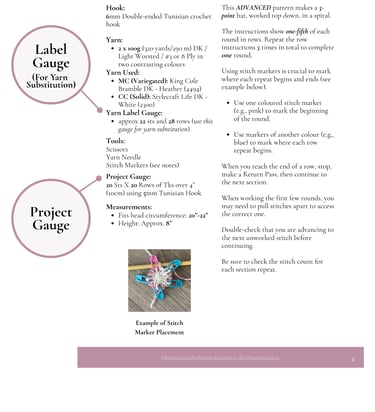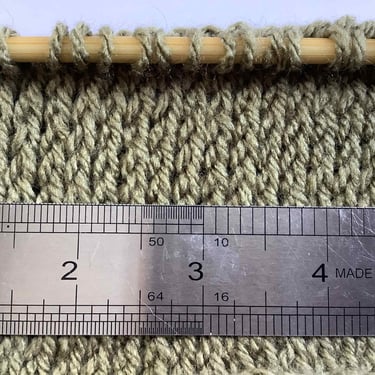Understanding Project Gauge
Project Gauge
Each No-Float pattern includes a Project Gauge section in the notes.
This shows the number of stitches and rows per 4-inch (10 cm) square that I’ve measured from a finished project.
Matching this project gauge helps your work turn out as close as possible to the sample — both in size and in proportion.
If your gauge is tighter, your finished piece may come out smaller.
If it’s looser, it might be too big.
Taking a few minutes to check your gauge can make all the difference — giving your finished piece a better look and fit.
But first you will need to make swatch! (I know... the joy! 😉)
Once you have made you swatch and the measurements match you will be ready to begin the project.


If you’re new to Tunisian No Float patterns, understanding Project Gauge is key to making sure your patterns turn out how you expect.
What Is Project Gauge Anyway?
In the No-Float method, project gauge (aka tension), isn’t quite the same as the gauge listed on your yarn label — and it’s important to know the difference.
The Yarn Label Gauge
The information on a yarn label tells you how many stitches and rows you’ll get in a 4-inch (10 cm) square when you use a specific hook or needle size.
This detail is mainly helpful if you’re knitting or doing regular crochet, as it ensures your finished piece turns out the correct size.
However, in No-Float patterns, the label gauge is included only as a guide — it helps you choose a substitute yarn if you can’t find (or don’t want to use) the recommended one. Click here to learn more about yarn substitution.
1.To Make a Swatch
Use the hook size and yarn recommended for your pattern.
Make a chain of approx 15 cm and cast on, using Tunisian Knit Stitch (TKS) (as this is the main stitch used in No-Float colourwork), crochet as many row needed until you have a square of least 15 x 15 cm).
→ This gives you a true central section to measure from (edges can distort).
2.Measure Your Gauge
Use a gauge ruler or tape measure over the flat section (avoid edges)
Count:
Stitches across 10 cm (width)
Rows up 10 cm (height)
Example:
Your pattern says:
Gauge: 16 sts x 14 rows = 10 x 10 cm in TKS with 5 mm hook
If your swatch measures:
Less than 26 sts = 10 cm → your stitches are too small → go up half a hook size to a 5.5 mm.
More than 26 sts = 10 cm → your stitches are too large → go down half a hook size to a 4.5 mm.
Or
Try different hook sizes until you get 26 sts in your measured, 10 cm square.
3.Adjust Hook Size
Always change hook size, not tension, to match the pattern’s gauge.
Tunisian stitches are sensitive to even small hook changes — moving up or down 0.5 mm can make a big difference.


